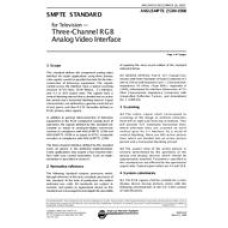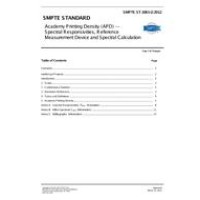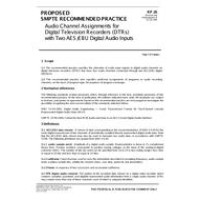SMPTE 253M-1998 (Archived 2003)
- Television - Three-Channel RGB Analog Video Interface
- standard by Society of Motion Picture and Television Engineers,
- Category: SMPTE
$50.00
$25.00
 PDF
PDF
All of our standards document are available in PDF (Portable Document Format), an electronic, downloadable format.You will be able to download the file in your account downloads.
 Multi-User Access
Multi-User Access
After purchasing, you have the ability to assign each license to a specific user.
 Printable
Printable
At any time, you are permitted to make printed copies for your and your members' reference use.





